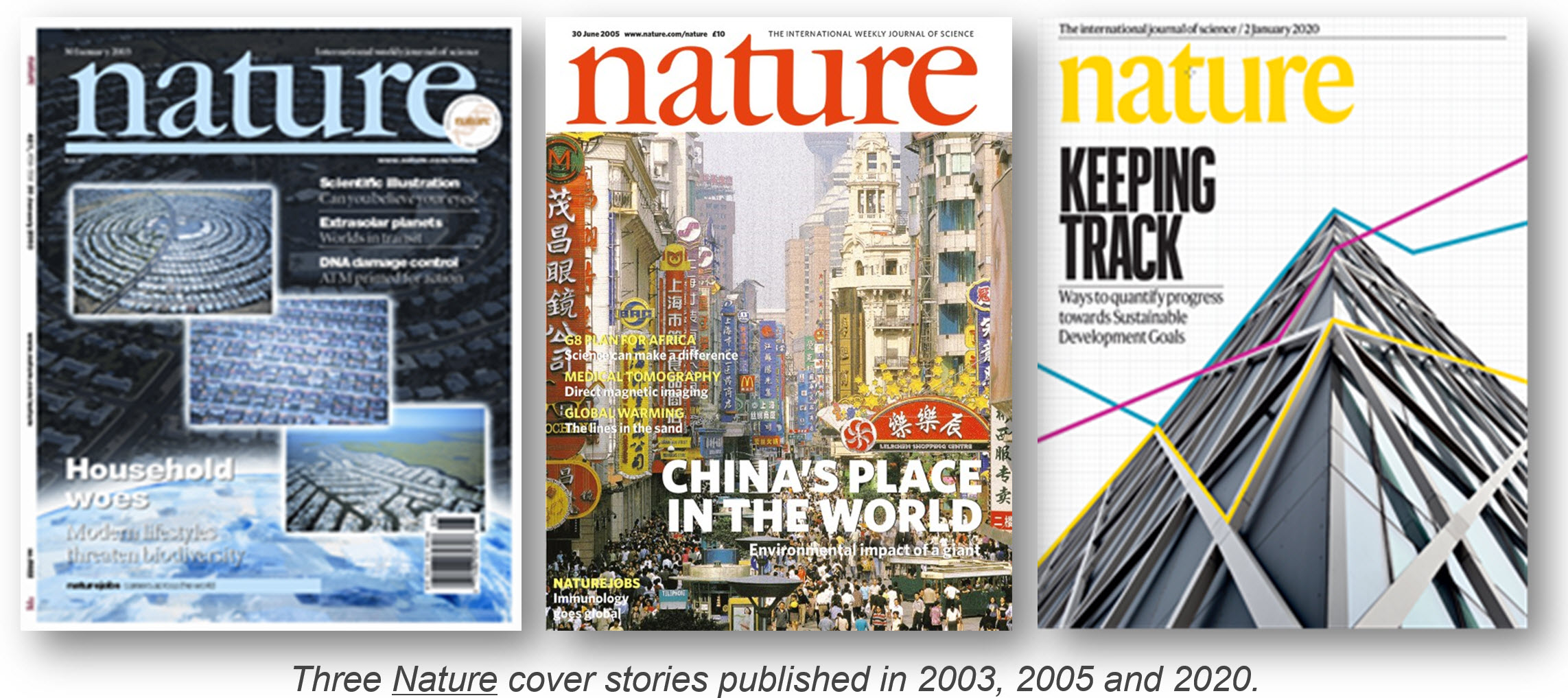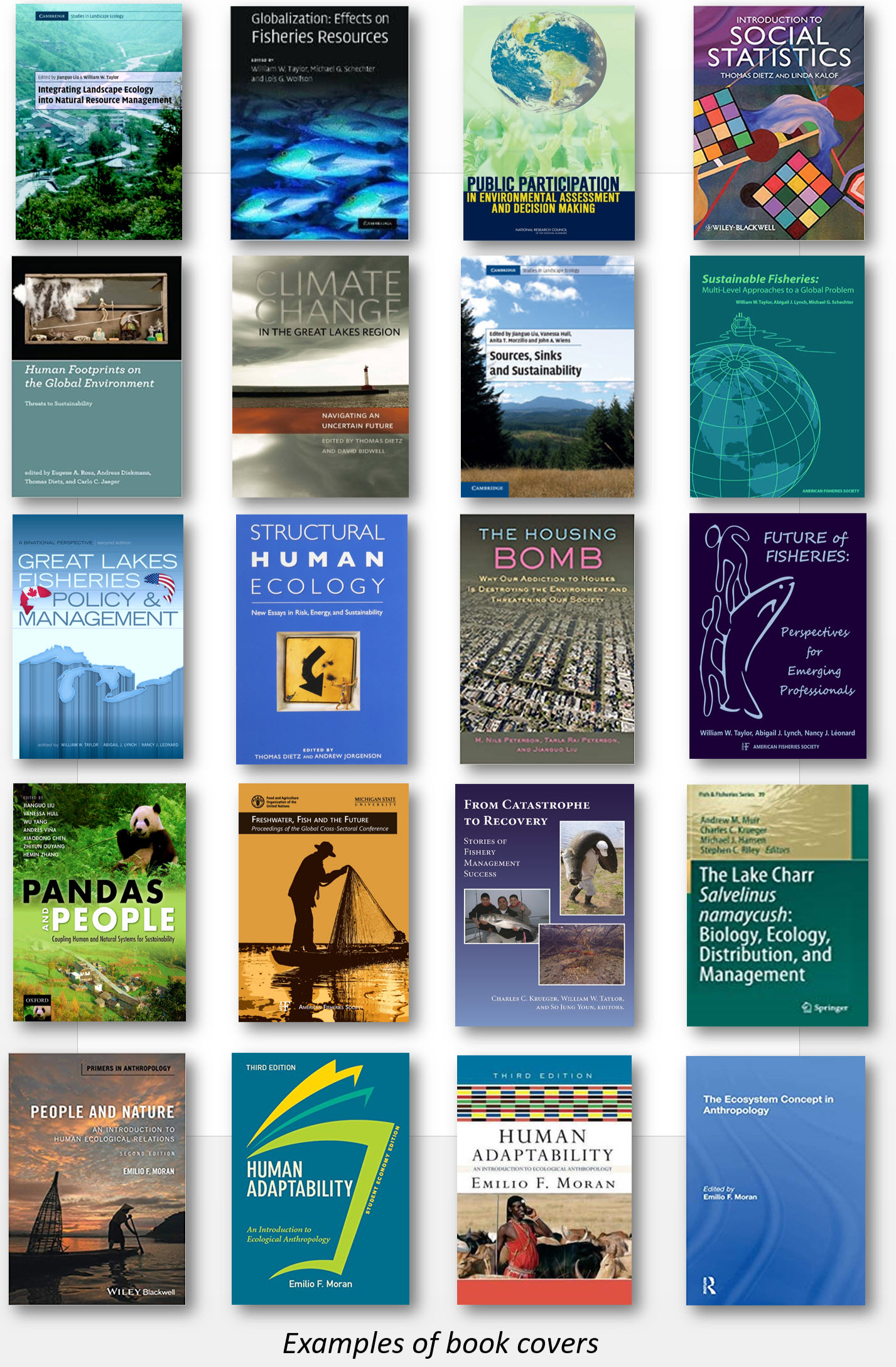Publications
Journal Articles
A list of journal articles published by CSIS members, including 3 cover stories in Nature, 24 appearances in Science, and 17 in PNAS (Proceedings of the National Academy of Sciences of the United States of America).
Books and Book Chapters
Selected books (edited books) and book chapters published by CSIS members.
Publications
-
Interregional flows of ecosystem services: Concepts, typology and four cases
Published on February 21, 2018
Conserving and managing global natural capital requires an understanding of the complexity of flows of ecosystem services across geographic boundaries -
Otolith chemistry as a fisheries management tool after flooding: the case of Missouri River gizzard shad
Published on February 11, 2018
We used otolith chemistry to quantify Hipple Lake’s natal contribution to Lake Sharpe’s gizzard shad population and forecast effects of connectivity loss on the reservoir’s socioeconomically important walleye fishery. -
Predicting habitat suitability for eleven imperiled fluvial freshwater mussels
Published on February 6, 2018
Understanding patterns in freshwater mussel distributions and habitat use, particularly for imperiled species, is critical for their conservation -
Cropping System Conversion led to Organic Carbon Change in China's Mollisols Regions
Published on January 28, 2018
Land use change driven by diet, globalization, and technology advancement have greatly influenced agricultural production and environment in the mollisols region of China -
Uncertainty of future projections of species distributions in mountainous regions
Published on January 22, 2018
Multiple factors introduce uncertainty into projections of species distributions under climate change. The uncertainty introduced by the choice of baseline climate information -
Effects of grain size and niche breadth on species distribution modeling
Published on December 27, 2017
This study investigate the effect of grain size and niche breadth on SDMs. -
Peruvian anchoveta as a telecoupled fisheries system
Published on December 21, 2017
As economic and ideational globalization accelerate, fisheries are becoming more globally connected via movements of fish products and fisheries finances, information, and stakeholders throughout the world. -
Nature reserve requirements for landscape-dependent ungulates: The case of endangered takin (Budorcas taxicolor) in Southwestern China
Published on December 21, 2017
To determine the key landscape characteristics of the endangered takin (Budorcas taxicolor), we systematically surveyed for their occurrence in the Northern MinShan Mountains, China, during 2010–2011. -
Evaluating Landscape Options for Corridor Restoration between Giant Panda Reserves
Published on December 21, 2017
Our study suggested that in this landscape, automobile tunnels are the best means to remove current barriers to giant panda movements caused by anthropogenic interferences. -
Does one size fit all? A multispecies approach to regional landscape corridor planning
Published on December 21, 2017
We quantitatively evaluated habitat suitability of a single umbrella species, giant panda; habitat suitability of sympatric mammals; and the potential effectiveness of the planning to preserve suitable habitat and its connectivity of other focal species. -
Species- and habitat-specific otolith chemistry patterns inform riverine fisheries management
Published on December 14, 2017
The goal of this study was to develop a predictive methodology for using species and habitat identity to design efficient otolith chemistry studies. -
Assessing the utility of otolith chemistry for management of six freshwater fishes from a river-reservoir system
Published on December 14, 2017
Although floodplain habitats are important for fish production and recruitment, their natal contributions may vary by species, a topic that has not been thoroughly investigated in large floodplain rivers. -
The Recovery Processes of Giant Panda Habitat in Wolong Nature Reserve, Sichuan China (Chinese)
Published on December 6, 2017
According to this study, the artificially planted habitat was neither an efficient approach for the bamboo resources recovery nor for the vegetation community recovery. -
ECOLOGY AND SOCIETY -- Integration across a metacoupled world
Published on November 26, 2017
This paper presents an integrated framework of metacoupling: human-nature interactions within a system (intracoupling), between distant systems (telecoupling), and between adjacent systems (pericoupling). -
Spatio-temporal characteristics of the trade-off and synergy relationships among multiple ecosystem services in the Upper Reaches of Hanjiang River Basin
Published on November 16, 2017
In this paper, we mapped the ecosystem service of soil conservation, net primary production and water yield in the upper reaches of Hanjiang River Basin based on the land use and land cover. -
A three-dimensional mapping of the ocean based on environmental data
Published on November 9, 2017
This paper describes an objectively derived and globally comprehensive set of 37 distinct volumetric region units, called ecological marine units (EMUs). -
The past, present and future distribution of a deep-sea shrimp in the Southern Ocean
Published on November 9, 2017
We use species distribution models to predict changes in the geographic range of the deep-sea Antarctic shrimp Nematocarcinus lanceopes under changing climatic conditions from the Last Glacial Maximum to the present and to the year 2100. -
Grand challenges in the management and conservation of North American inland fish and fisheries
Published on November 9, 2017
The themes identified are to raise awareness of diverse values associated with inland fish and fisheries, govern inland fish and fisheries to satisfy multiple use and conservation objectives, and ensure productive inland fisheries. -
Assessing fisheries impact on river fish biomass: A systematic map protocol
Published on November 9, 2017
We describe our methodology to search, identify, and describe available river fisheries to create a global database of river fisheries harvest. This will provide the first global database of spatially and temporally explicit river fisheries data. -
Stochastic spread models: A comparison between an individual-based and a lattice-based model for assessing the expansion of invasive termites over a landscape
Published on October 19, 2017
In this work, we introduce a new stochastic lattice-based model for simulating the spread of invasive termites over a landscape and compare it to a recently published stochastic individual-based approach.





 Print
Print Email
Email